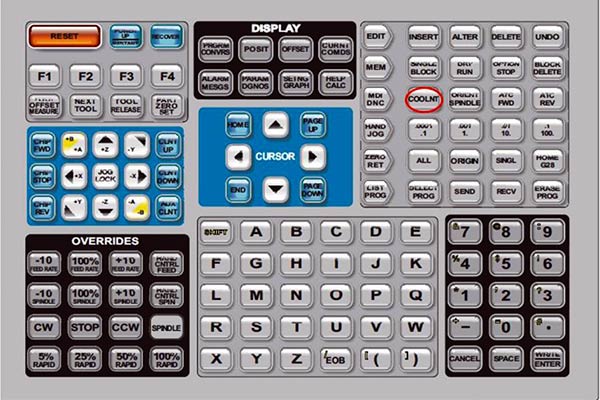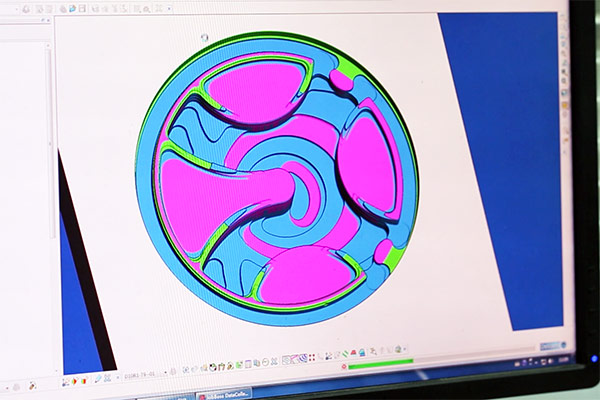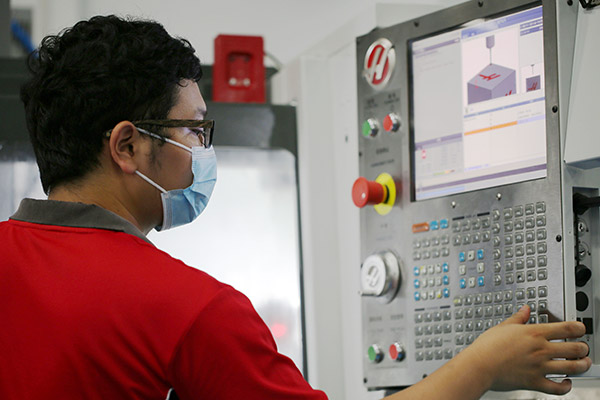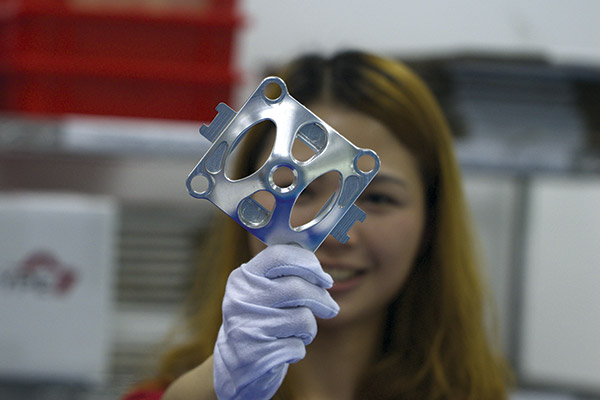
Typical CNC machine controller from HAAS.
G-code is a generic term for a programming language used to instruct a numerically-controlled machine tool. It controls all aspects of machine movement including spindle speed, the tool path, how fast to move and where to locate itself in a multi-axis space.
Complex shapes made using CNC machining can potentially require thousands of lines of code to direct every movement that the cutter head makes throughout the program. A single mistake in this code can lead to a head crash, a broken cutter, incorrect dimensions, scrapped parts, poor surface quality and wasted time. So it’s critical that this code is correct in order to produce good parts, maximize efficiency, prevent machine tool damage and protect worker safety.
It was originally developed in the 1950’s at MIT in their Servomechanisms Laboratory as part of the first academic efforts to create industry standards for computer-controlled machine tools.

3D CAD models are interpreted as point-by-point instructions
Although there are some variants to the language, G-code is generated when a three-dimensional CADdrawing is interpreted by the specialty programs used to control the CNC machines. In our case, we use Delcam PowerMILL® from Autodesk for all of our CNC vowin.cn/en/News/news1251.html' target='_blank'>milling and turning.
No. There are many possible ways for a machine tool to make a finished part. The G-Code outputted by a given software is just one possible interpretation of the best cutting program, based on many variables such as machine type, part geometry, tool type, raw material, etc. The calculation can be a complex one, and is not always optimized for the actual circumstances on the factory floor.

Skilled machinists are needed to verify and correct machine code when necessary while monitoring all functions.
Once PowerMILL®has created the G-Code for your part, we then use a second program called Vericut®from CGTech. Vericut®is used to qualify every cutting program that we make before it goes to the CNC machine. Vericut®helps to determine the ideal tool speed and feed rates, the tool path and more. Vericut®maximizes efficiency, reduces waste, avoids tool crashes or broken cutters and provides superiorsurface finish results.

Star Rapid operator with a sample machined part

Typical CNC machine controller from HAAS.
G-code is a generic term for a programming language used to instruct a numerically-controlled machine tool. It controls all aspects of machine movement including spindle speed, the tool path, how fast to move and where to locate itself in a multi-axis space.
Complex shapes made using CNC machining can potentially require thousands of lines of code to direct every movement that the cutter head makes throughout the program. A single mistake in this code can lead to a head crash, a broken cutter, incorrect dimensions, scrapped parts, poor surface quality and wasted time. So it’s critical that this code is correct in order to produce good parts, maximize efficiency, prevent machine tool damage and protect worker safety.
It was originally developed in the 1950’s at MIT in their Servomechanisms Laboratory as part of the first academic efforts to create industry standards for computer-controlled machine tools.

3D CAD models are interpreted as point-by-point instructions
Although there are some variants to the language, G-code is generated when a three-dimensional CADdrawing is interpreted by the specialty programs used to control the CNC machines. In our case, we use Delcam PowerMILL® from Autodesk for all of our CNC milling and turning.
No. There are many possible ways for a machine tool to make a finished part. The G-Code outputted by a given software is just one possible interpretation of the best cutting program, based on many variables such as machine type, part geometry, tool type, raw material, etc. The calculation can be a complex one, and is not always optimized for the actual circumstances on the factory floor.
Skilled machinists are needed to verify and correct machine code when necessary while monitoring all functions.
Once PowerMILL®has created the G-Code for your part, we then use a second program called Vericut®from CGTech. Vericut®is used to qualify every cutting program that we make before it goes to the CNC machine. Vericut®helps to determine the ideal tool speed and feed rates, the tool path and more. Vericut®maximizes efficiency, reduces waste, avoids tool crashes or broken cutters and provides superiorsurface finish results.

Star Rapid operator with a sample machined part


